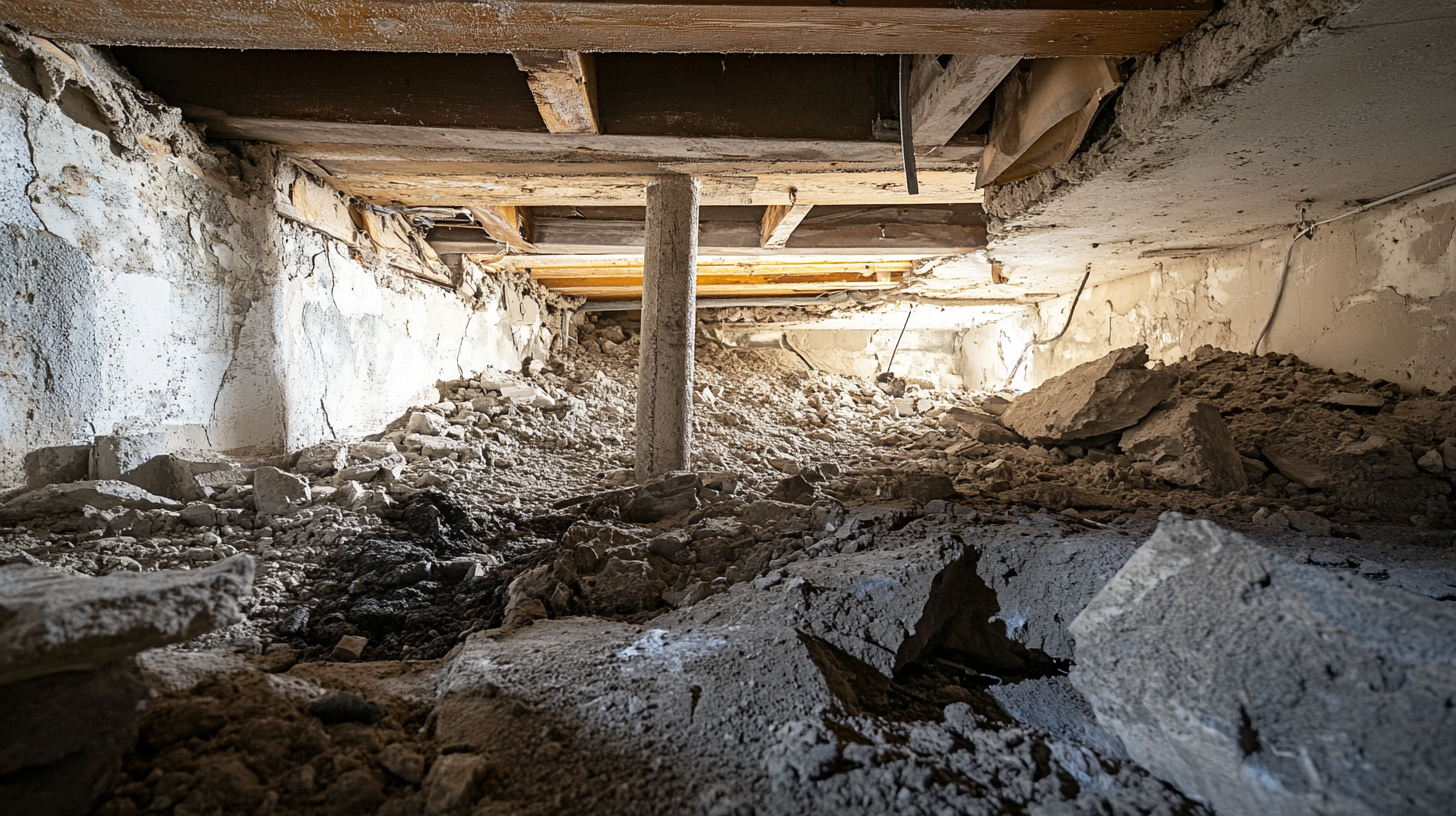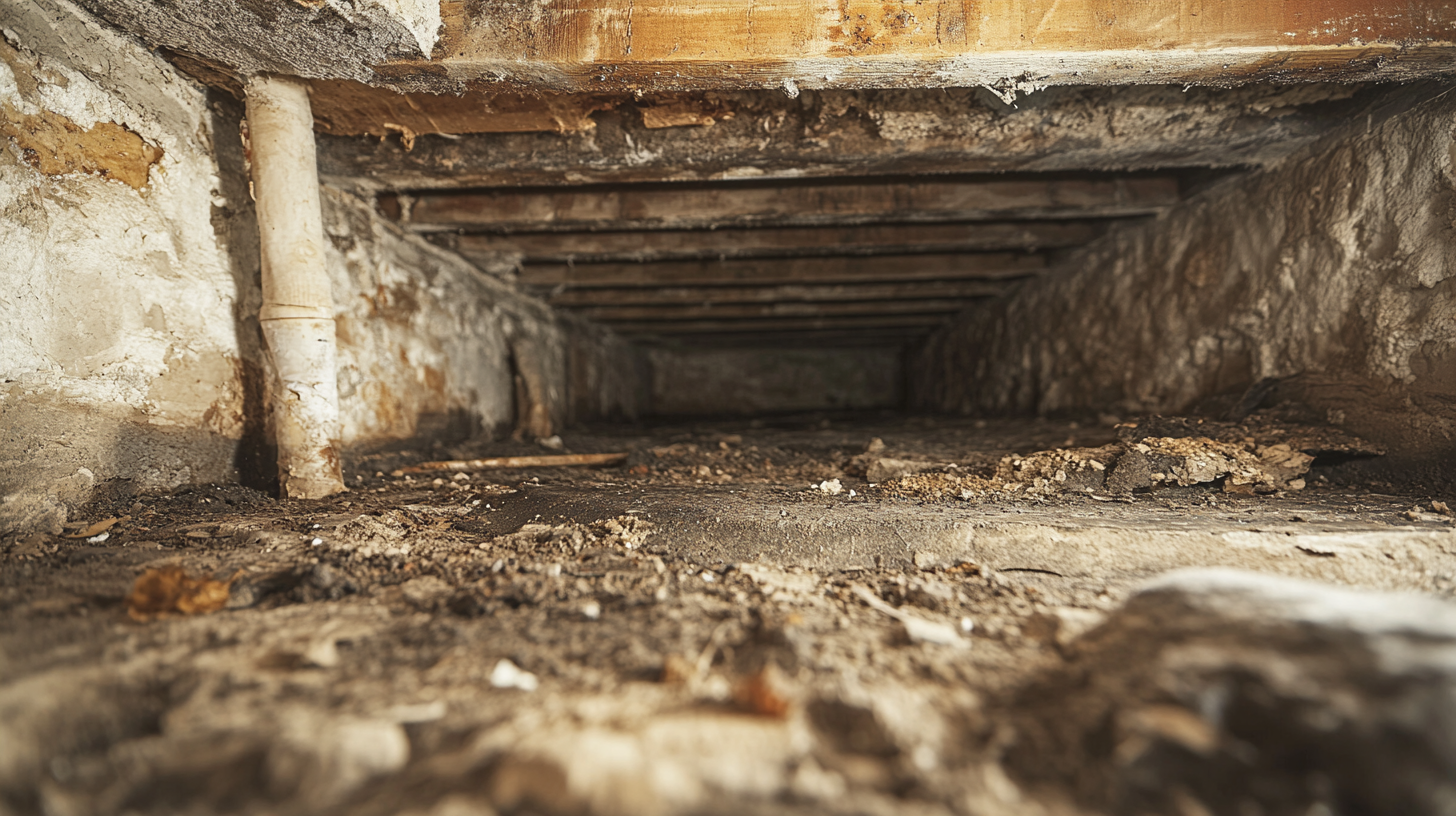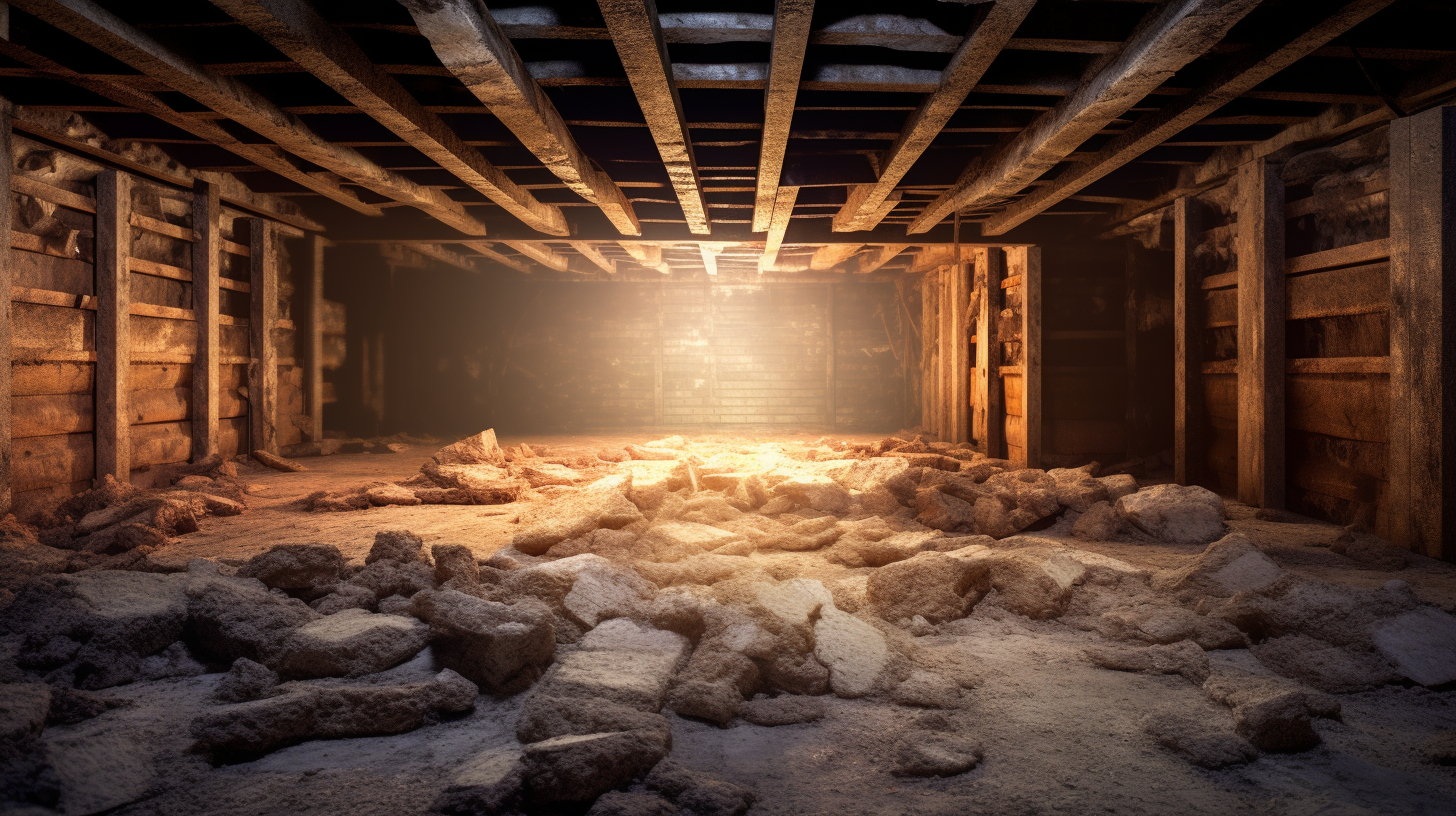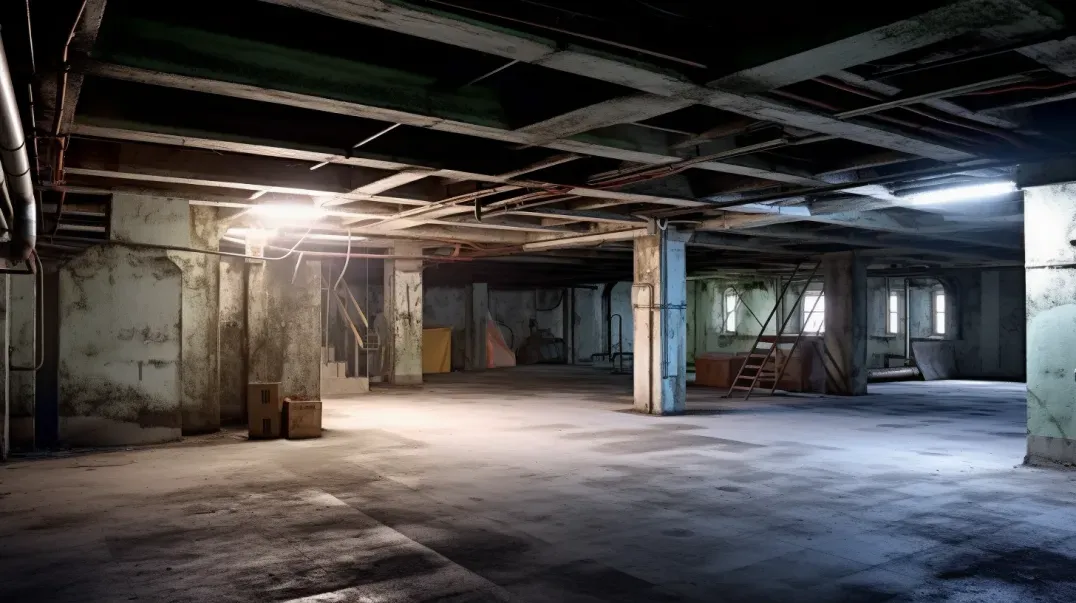In the intricate dance of maintaining a healthy home, the crawl space often plays an unseen yet pivotal role. It's a space that, when properly cared for, supports the structural integrity of our homes, preserves the longevity of building materials, and contributes to the overall indoor air quality. Central to this care is effective ventilation—a process deeply influenced by the local climate surrounding your home. This blog delves into the critical importance of understanding local climate conditions for designing and implementing an effective crawl space ventilation strategy.
Local climate dictates everything from the air's moisture content to its temperature fluctuations and the presence of seasonal weather patterns. These environmental factors directly impact how we should approach crawl space ventilation, as the goal is not only to circulate air but to do so in a way that counters the potential challenges posed by our specific climate. Whether battling the dampness brought on by high humidity in coastal regions or the dry air of arid landscapes, tailoring your home's ventilation to your local climate is key to safeguarding its structure and ensuring a healthy living environment.
From the frosty chill of northern winters to the sweltering heat of southern summers, local weather conditions present unique challenges to maintaining optimal moisture levels and air quality in crawl spaces. Understanding these challenges is the first step toward mitigating them effectively. This blog will guide you through the reasons why local climate knowledge is indispensable for effective crawl space ventilation, exploring how different climates necessitate distinct ventilation solutions. We'll uncover the symbiotic relationship between your home and its environment, highlighting strategies to harmonize this relationship through tailored ventilation practices.
Join us as we navigate the complexities of climate-specific ventilation needs, equipping you with the knowledge to make informed decisions that enhance the health and durability of your home. Understanding your local climate is not just about adapting to the weather outside—it's about creating a stable, healthy environment within, starting from the ground up.
Climate and Crawl Space Challenges
The crawl space, a critical yet often overlooked component of home infrastructure, faces various challenges that are deeply influenced by the local climate. From the sweltering humidity of the tropics to the biting cold of polar regions, each climate presents unique hurdles for maintaining a healthy and efficient crawl space. This guide explores the common issues encountered in different climates and underscores the importance of understanding local weather patterns to safeguard your home's foundation and indoor air quality.
Common Crawl Space Issues in Various Climates
Humidity Concerns in Tropical and Subtropical Regions:
In tropical and subtropical regions, high humidity is a prevalent challenge, leading to excessive moisture accumulation in crawl spaces. This moisture can foster the growth of mold and mildew, contribute to wood rot, and attract pests such as termites and rodents. The constant dampness not only threatens the structural integrity of the home but can also impact indoor air quality, potentially causing health issues for the inhabitants.
Cold and Moisture in Temperate and Polar Regions:
Conversely, in temperate and polar regions, cold temperatures combined with moisture present a different set of challenges. Here, the primary concern is the formation of condensation within the crawl space as warm indoor air meets the cold surfaces of the foundation and ground. This condensation can lead to similar issues as seen in more humid climates, such as mold growth and structural damage. Additionally, inadequate insulation in these climates can result in significant heat loss, increasing heating costs and reducing overall energy efficiency.
Understanding the Local Climate
The Importance of Local Weather Patterns and Seasonal Changes:
Understanding the local climate, including typical weather patterns and seasonal variations, is crucial for developing effective strategies to manage crawl space challenges. Knowledge of your local climate allows you to anticipate potential issues before they arise and implement preventative measures, such as adjusting ventilation or improving insulation, to mitigate their impact.
Resources for Climate Data and How to Interpret Them:
Several resources are available for homeowners seeking to understand their local climate better:
- National and Regional Weather Services: These organizations provide comprehensive climate data, including historical weather patterns and seasonal forecasts.
- Local Universities and Environmental Agencies: Many of these institutions conduct climate research and can offer localized climate information and resources.
- Online Climate Data Tools: Various websites and tools offer access to climate data, allowing homeowners to track humidity levels, temperature averages, and more for their specific location.
Interpreting this data typically involves looking for trends that could impact your crawl space, such as periods of high humidity or extended cold spells. By aligning this information with the known challenges of your climate, you can tailor your crawl space maintenance and improvement efforts to effectively address these issues.
Ventilation Strategies for Different Climates
Creating a healthy and comfortable living environment requires understanding how to effectively manage ventilation in response to your local climate's unique challenges. From the sweltering humidity of the tropics to the biting chill of arctic regions, each climate demands a tailored approach to ensure optimal air quality and structural integrity. This guide explores effective ventilation strategies designed to address the specific needs of hot and humid climates as well as cold and dry climates, offering solutions to maintain a balanced and healthy indoor environment.
Hot and Humid Climates
Challenges: Mold Growth and Structural Damage Due to Excessive Moisture
In hot and humid climates, the primary challenge is managing the high levels of moisture that can infiltrate homes, leading to mold growth and potential structural damage. The constant presence of moisture can weaken wooden structures, corrode metals, and create an ideal environment for mold and mildew to thrive, posing health risks to inhabitants and compromising the home's integrity.
Ventilation Solutions: Dehumidifiers, Vapor Barriers, and Conditioned Air Supply
- Dehumidifiers: Implementing dehumidifiers within the crawl space can significantly reduce moisture levels, directly combating the conditions that lead to mold growth and structural damage.
- Vapor Barriers: Installing a vapor barrier on the crawl space floor can prevent ground moisture from evaporating into the crawl space air, further reducing humidity levels within the home.
- Conditioned Air Supply: Introducing conditioned air (air that has been cooled and dehumidified) into the crawl space can help maintain a stable and comfortable humidity level, enhancing the overall effectiveness of the ventilation strategy.
Cold and Dry Climates
Challenges: Insulation and Energy Efficiency Concerns
In cold and dry climates, the focus shifts towards maintaining warmth and maximizing energy efficiency. The challenge lies in preventing cold air infiltration and heat loss through the crawl space, which can lead to increased heating costs and uncomfortable drafts within the living spaces above.
Ventilation Solutions: Insulated Vents, Heat Recovery Ventilators
- Insulated Vents: Utilizing insulated vents can help minimize heat loss from the crawl space, ensuring that ventilation does not compromise the home's thermal envelope.
- Heat Recovery Ventilators (HRVs): HRVs can efficiently exchange stale indoor air with fresh outdoor air while recovering heat from the outgoing air and transferring it to the incoming air. This process maintains air quality without sacrificing warmth, making it an ideal solution for cold and dry climates.
By adopting climate-specific ventilation strategies, homeowners can effectively address the unique challenges posed by their local weather conditions, ensuring their homes remain healthy, comfortable, and structurally sound. Whether combating moisture in a tropical setting or preserving warmth in a polar environment, the right ventilation approach can make all the difference.
Adapting Ventilation to Seasonal Changes
As the seasons shift from the warmth of summer to the chill of winter, the needs of our homes evolve, particularly in terms of ventilation. Effective ventilation is not a one-size-fits-all solution; it requires adaptation to maintain a comfortable, healthy, and energy-efficient environment year-round. This guide explores how to transition your ventilation strategies between seasons and the tools and techniques for monitoring and adjusting your home's ventilation to meet the changing demands of the environment.
Transitioning Between Seasons
Adjusting Ventilation Strategies for Summer and Winter:
The key to effective seasonal ventilation lies in understanding the unique challenges and opportunities each season presents. In summer, the focus is on expelling hot, humid air to cool the home and reduce moisture levels, which can be achieved through increased natural ventilation or the use of mechanical systems like dehumidifiers and air conditioners. In contrast, winter ventilation strategies aim to retain warmth while ensuring fresh air supply, often requiring reduced natural ventilation and the incorporation of heat recovery ventilators (HRVs) to pre-warm incoming cold air.
Tips for Maintaining Optimal Conditions Year-Round:
- Seasonal Inspections: Conduct thorough inspections of your ventilation system at the start of each season to ensure all components are clean, functional, and free from obstructions.
- Adjust Vent Openings: Modify the openings of windows, vents, and dampers seasonally to control the volume of air exchange, increasing in summer for cooling and reducing in winter to conserve heat.
- Utilize Smart Controls: If available, use smart thermostats and humidity sensors to automatically adjust ventilation rates based on indoor temperature and humidity levels, optimizing comfort and efficiency.
Monitoring and Adjusting Ventilation
Tools for Monitoring Humidity and Temperature:
Effective seasonal ventilation management relies on accurate monitoring of indoor humidity and temperature. Tools such as digital hygrometers and smart thermostats can provide real-time data, allowing homeowners to make informed decisions about adjusting their ventilation strategies. Some systems even offer remote monitoring capabilities through smartphone apps, enhancing convenience and control.
When and How to Adjust Ventilation Settings:
- When: Adjustments should be made at the onset of significant seasonal weather changes, in response to shifts in indoor air quality indicators, or when occupancy patterns change (e.g., hosting guests, which increases indoor humidity and CO2 levels).
- How: Increase mechanical ventilation rates or open additional vents during hot, humid periods to remove excess moisture and heat. In cold weather, reduce natural ventilation to minimize heat loss and rely more on mechanical systems with heat recovery capabilities to maintain fresh air supply without sacrificing warmth.
Adapting your home's ventilation to the changing seasons is crucial for ensuring a comfortable and healthy living environment while optimizing energy use. By understanding the dynamics of seasonal ventilation needs, utilizing the right monitoring tools, and being proactive in making adjustments, homeowners can navigate the challenges of each season effectively, maintaining optimal indoor conditions all year long.
Innovative Solutions for Climate Control
In the quest for more sustainable and efficient homes, innovative solutions for climate control have emerged, revolutionizing how we manage indoor environments. Among these advancements, smart ventilation systems and energy-efficient options stand out, offering homeowners new ways to enhance comfort, improve air quality, and reduce energy consumption. This guide delves into the cutting-edge technologies shaping the future of home ventilation, from automated systems powered by smart technology to eco-friendly solutions leveraging renewable energy.
Smart Ventilation Systems
How Technology Can Automate and Optimize Ventilation:
Smart ventilation systems represent a leap forward in home climate control, utilizing advanced technology to automate and optimize airflow based on real-time environmental data. These systems are equipped with sensors that monitor indoor air quality, temperature, and humidity levels, adjusting ventilation rates automatically to maintain optimal conditions. By responding dynamically to changes in the indoor environment, smart ventilation ensures efficient air exchange, reducing the need for manual adjustments and enhancing overall comfort.
Benefits of Integrating Smart Sensors and IoT Devices:
The integration of smart sensors and Internet of Things (IoT) devices into ventilation systems offers several key benefits:
- Precision Control: Smart sensors provide precise monitoring of indoor conditions, allowing the ventilation system to respond with pinpoint accuracy to maintain desired environmental settings.
- Energy Savings: By optimizing ventilation rates based on actual needs, smart systems can significantly reduce energy consumption, lowering utility bills and minimizing the environmental footprint of the home.
- Enhanced Comfort and Health: Automated adjustments ensure consistent air quality and comfort levels, reducing the risk of issues related to poor ventilation, such as mold growth and airborne pollutants.
Energy-Efficient Ventilation Options
Ventilation Systems That Minimize Energy Consumption:
Energy-efficient ventilation options are designed to provide effective air exchange while minimizing energy use. Technologies such as heat recovery ventilators (HRVs) and energy recovery ventilators (ERVs) are at the forefront of this effort. These systems recover heat (and in the case of ERVs, moisture) from outgoing stale air and use it to precondition incoming fresh air, reducing the energy required for heating or cooling.
The Role of Renewable Energy Sources in Crawl Space Ventilation:
Incorporating renewable energy sources into crawl space ventilation presents an opportunity to further reduce the environmental impact of climate control systems. Solar-powered fans, for example, can provide effective ventilation for crawl spaces without drawing on the electrical grid, harnessing the sun's energy to operate. Similarly, wind-powered ventilation solutions can offer a sustainable alternative for areas with consistent wind patterns, providing continuous airflow with minimal energy input.
Innovative solutions for climate control, such as smart ventilation systems and energy-efficient options powered by renewable energy, are transforming how we maintain indoor environments. By leveraging technology and sustainable energy sources, homeowners can enjoy improved comfort and air quality, achieve significant energy savings, and contribute to a healthier planet.
Preparing for Extreme Weather Events
Extreme weather events pose significant risks to homes, particularly to areas as vulnerable as crawl spaces. From floods and hurricanes to earthquakes, each natural disaster presents unique challenges that require proactive preparation and response strategies. This guide explores effective measures for protecting your crawl space against such events, ensuring the safety and integrity of your home, and provides insights into emergency ventilation and recovery processes.
Protecting Your Crawl Space from Natural Disasters
Strategies for Flood, Hurricane, and Earthquake-Prone Areas:
- Floods: Elevate mechanical equipment and utilities above expected flood levels, install flood vents to allow water to flow through the crawl space rather than accumulate, and consider using sump pumps to remove excess water.
- Hurricanes: Strengthen crawl space doors and vents to withstand high winds and flying debris. Secure or remove any items in the crawl space that could become projectiles. Ensure proper drainage around the home to prevent water accumulation.
- Earthquakes: Anchor and brace the foundation and crawl space supports to increase structural stability. Inspect and reinforce connections between the crawl space and the main structure to prevent detachment or shifting during seismic activity.
Reinforcement and Waterproofing Techniques:
- Reinforcement: Use seismic retrofitting techniques for earthquake resilience, including foundation bolting and cripple wall bracing. For hurricane protection, reinforce crawl space doors and access points with heavy-duty materials.
- Waterproofing: Apply waterproof coatings and sealants to the interior of the crawl space walls to prevent moisture ingress. Ensure that exterior drainage systems, such as gutters and downspouts, are clear and direct water away from the foundation.
Emergency Ventilation and Recovery
Ventilation Considerations During and After Extreme Weather:
During extreme weather, it may be necessary to close or protect crawl space vents to prevent water entry or damage from debris. After the event, assess the need to ventilate or dehumidify the space to dry out any moisture that may have entered, preventing mold growth and further damage.
Steps for Assessing and Repairing Damage:
- Safety First: Wait until it is safe to do so before inspecting your crawl space. Wear appropriate protective gear to guard against potential hazards.
- Assessment: Carefully inspect the crawl space for structural damage, water intrusion, and signs of mold or pests. Document any damage for insurance purposes.
- Cleanup and Drying: Remove debris and water as soon as possible. Use fans, dehumidifiers, or professional drying services to dry out the area thoroughly.
- Repairs: Address any structural repairs needed to restore the integrity of the crawl space. This may include fixing foundation cracks, replacing damaged insulation, or reinforcing supports.
- Preventative Measures: Implement or enhance protective measures to mitigate the impact of future extreme weather events, based on the lessons learned.
Preparing for extreme weather events by protecting your crawl space and understanding emergency ventilation and recovery processes can significantly reduce the risk of damage to your home. By adopting proactive strategies tailored to specific natural disaster risks and following a structured approach to recovery, homeowners can ensure the resilience and safety of their living environment against the forces of nature.
FAQs
Contact Trench Guys Today!
Trench Guys will do everything we can to ensure your experience with us is excellent.
Request A FREE Estimate
Request a Free Estimate Form
Checkout Recent Post




Got a Question? We’re Here to Help.
You can arrange an appointment or make an enquiry by phone or email, orget in touch to us via our contact form.



